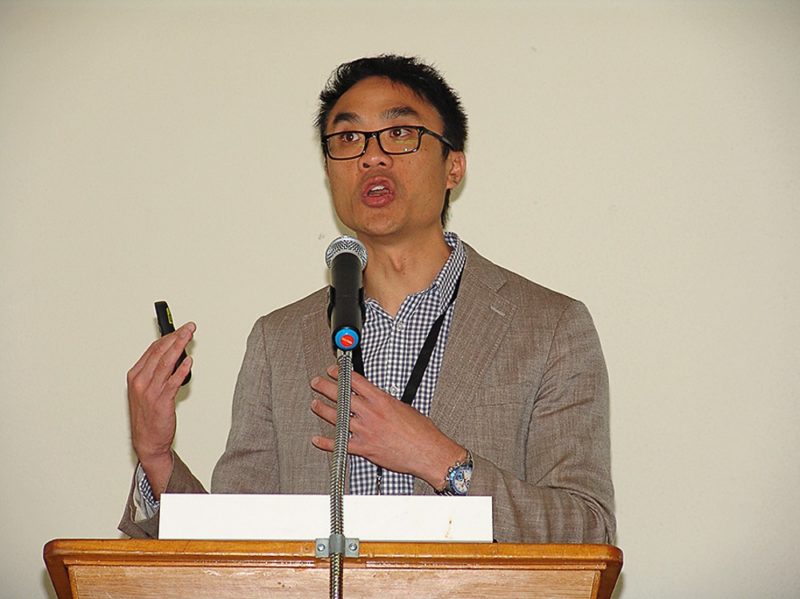by JEFF DILLON
Judging from overheard comments, it appeared that there were many well-satisfied participants at the end of the two-day National Parish Leadership Conference on “Seeking Holiness in a secular society” held at the end of September at Holy Cross Centre in Mosgiel.
There were 127 attendees at the conference, the planning of which took place over a couple of years through the efforts of the members of the National Pastoral Planners Network, which has a representative from each of the six New Zealand dioceses.
The conference drew participants from throughout New Zealand. Each day had a keynote speaker, followed by workshops over two 90-minute time slots. Attendees could select from five topics at each of the four workshop sessions. (So a total of 20 topics on offer).
The Friday keynote speaker was Daniel Ang from Sydney, who became a Catholic at the age of 20 in 1999 in a parish church in a North-West suburb in Sydney.
He came from a family of Buddhist and Taoist heritage. The date — November 24, 1999 — would have been nothing out of the ordinary for the people of the parish, but for him it was a time of great consequence, of
spiritual and vital breakthrough into the life of God “to discover Christ as the total meaning of my life”.
In his opinion, the local parish remains a privileged place of God’s grace in the world. “However, the possibility of personal spiritual breakthrough into the life of God is not the same thing as the frequency of its happening.”
He considered that would be suggested by the many challenges that our parishes face, in Australia and New Zealand and in many parts of the West.
The problems are well known. For example, declining Mass attendance, low morale in some quarters, low religious literacy among many of the people we encounter, and the pain of structural change, which tends to direct energies inwards.
He pointed out that we can no longer rely on a Catholic conveyor belt of Catholic parents baptising their children, sending their children to Catholic schools with the expectation that they would automatically come out of that process as intentional followers of Jesus Christ.
“Those things do not guarantee a lived relationship with Jesus.” Baptism gives the potential of faith, but people have to be evangelised to bring it to life.
But he added: “We are caught between a call and desire for renewal that we all share and the weight of our own Church culture that wants the status quo.”
He suggested that there was a need to reclaim the “why” of our local communities of faith. He emphasised the need to become disciples. There was a need for vision of how we seek to respond to God.
“If you build the Church, you rarely get disciples. If you make disciples, you always get the Church.”
He then began to explore that thought and looked at the foundations that would be needed to achieve that vision as an essential parish strategy.
The first foundation was the importance of the proclamation of Good News, the kerygma or the basic truths of our Christian faith.
The second foundation was the cultivation of personal discipleship and the need for one person telling another how the encounter with Jesus Christ had changed their life.
The third foundation was where evangelising parishes created disciples in the midst of the Church. So a community of faith opens individual lives to more possibilities in the life of faith.
The fourth foundation was a parish for the sake of the world. Belonging to an active parish is not leaving the world, but to be in the world differently.
Mr Ang’s speech was warmly received. The keynote speaker on the Saturday morning was Kitty McKinley, who also provided thought provoking material.
There was a sense of togetherness evident in the air at the conference and all participants were very responsive to the material and ideas presented through the workshops and from the keynote speakers.

I agree with the speaker though and I direct you to the Vatican document ‘General Directory of Catechesis” (1997) for further instruction on the “kergymatic” method.
I also point out that the same document discriminates between the deductive method (top down based on revelation and kerygma, scripture, tradition, liturgy, transcendent) and the inductive method (bottom up, existential, experiential, subjective, human problems and conditions, immanent). In my view there’s far too much emphasis on the later inductive-existential-immanent approach.
However, enough with the rhetoric of “renew”, “reimagine”, progress etc and false-dichotomies between Church and people. It is as old as the hills. A Gen-X, as a child I remember the green booklets of the “RENEW” program of the 1980s, some bright spots to be sure, but what has it produced by 2020? A Church that is 2/3 over the age of 65, which couldn’t transmit the Faith to their children.